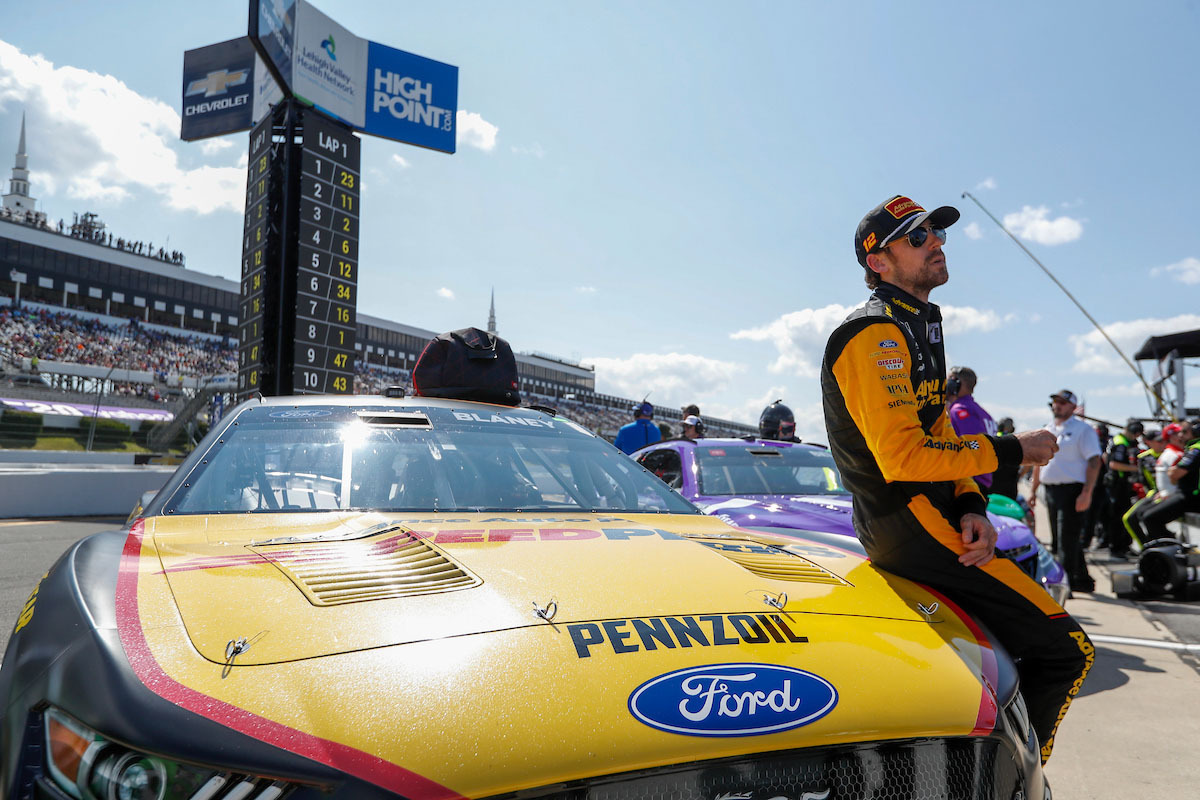Why do Nascar drivers get weighed?


Nascar drivers must go through a weighing process that outsiders may find trivial, however, it is a must-do before each race! This measuring procedure makes sure that both driver and vehicle follow the Nascar governing body’s weight regulations.
If not adhered to, the driver or team could face disadvantages in terms of speed, handling or safety. Post-race inspection might even lead to disqualification if the car is underweight. That’s why pre-race weighing is key to ensure fairness during competitions.
In addition, officials check technical specs such as the car’s rear spoiler height and engine compression ratio. This guarantees equal chances for veteran drivers and newcomers!
Safety is top priority in motorsport events, and Nascar enforces stringent regulations on many aspects. As ESPN reports, “A NASCAR Cup Series car cannot weigh less than 3,400 pounds (including driver and fuel) after qualifying or a race.”
Table of Contents
Why is weight important in Nascar?
NASCAR drivers undergo intense training and take part in rigorous races that require exceptional driving skills. As a result, their weight plays a crucial role in the performance of their cars. The weight of a driver and their car directly impact their speed, acceleration, and overall performance on the track. Due to this, drivers are weighed before and after the race to ensure that their car is meeting the weight requirement set by NASCAR.
In addition to the weight of the driver, different car models and brands are weighed differently in NASCAR races. Hence, the weight of the car also plays a crucial role in determining the overall performance of the driver on the track. Additionally, NASCAR officials use weight measurements to detect if a driver has modified their car illegally, providing a fair environment for all racers.
Notably, NASCAR drivers usually have to maintain an average weight and body mass to ensure they have the ideal weight to power ratio while racing. Being too light or too heavy can compromise the speed and agility of the driver’s car. To maintain the perfect weight and performance ratio, many NASCAR drivers follow strict diets and exercise routines.
To optimize performance in NASCAR, drivers can consider various suggestions, such as creating an ideal diet plan, looking for a car model with a high power to weight ratio, or maintaining their overall fitness levels. Following these suggestions ensures that drivers perform well on the track, remain competitive, and avoid penalties or disqualifications imposed by NASCAR officials.
Racing regulations and safety protocols
NASCAR Racing guidelines and measures for safety are essential for driver health, fair competition, and reducing car accidents. Authorities make sure drivers meet weight requirements and follow vehicle fitting specifications.
These are the key regulations and safety protocols:
- Minimum Weight: Drivers must meet minimum weight standards to handle long drives and be suited up safely.
- Car Safety Equipment: Helmet, neck brace, fire resistant gloves, and shoes must be up-to-date.
- Vehicle Inspection: All cars must pass inspection to comply with regulations.
Drivers must be fit and strong to handle high speeds and make quick decisions. NASCAR guidelines help protect the driver’s life.
Medications and treatments taken before racing must be discussed with a licensed physician. Officials should closely monitor such activities to protect other drivers on the track.
Car performance and balance
It’s all about performance and balance for Nascar racers. Weight plays a key role in how the car performs. Knowing how it works gives you an edge over your competitors.
The table shows the weight of some important components determining car performance and balance.
| Component | Weight |
|---|---|
| Chassis | 3,400 lbs |
| Engine | 575 lbs |
| Driver | 200 lbs |
A heavy chassis for stability, a lighter engine for speed, and a driver’s weight influencing the balance.
Plus, you can add or subtract ballast weight to adjust the car’s handling. This is especially useful on tracks with a lot of banking or long straights.
How is weight measured in Nascar?
NASCAR drivers undergo strict weight measurements before races to ensure fair competition. Here’s how this process works.
The following table shows the Weight Measurement Techniques in NASCAR:
| Technique | Description |
|---|---|
| Whole Car Weighing | The car, with equipment and driver, is weighed altogether. |
| Post-Race Weighing | After a race, the top finishers’ cars are weighed again. |
| Pre-Race Weighing | Cars are weighed before races to ensure compliance with rules. |
It’s important to note that the weight measurements are not just for the car, but also for the driver and equipment such as helmets. NASCAR aims to maintain fair play, which is why they enforce strict penalties on those who manipulate the weight of their car.
Tip: Avoiding weight restrictions can lead to advantages in speed and handling. Therefore, following the weight rules is critical to maintaining a level playing field in the highly-competitive NASCAR environment.
Pre-race weigh-in
Weight plays a major role in NASCAR, to ensure fair gameplay. Pre-Event Weight Measurement is the measurement of weight before the event begins.
Pre-Event Weight Measurement includes weighing drivers with all their equipment, such as suits, shoes, gloves and helmets. Cars are weighed with complete equipment like fuel tanks and fluids.
2008 Daytona Speedweeks saw Jimmie Johnson’s team get penalized for using two lighter-than-regulation shock absorbers. The crew chief was fined $100k, and Johnson lost some championship points.
Once the race is over, Nascar drivers can breathe easy knowing that the post-race weigh-in awaits…then, a cold beer.
Post-race weigh-in
After every Nascar race, drivers on the lead lap must report to the inspection trailer. Here, officials will weigh the vehicles to make sure they meet the weight requirements. These are: 3,300 pounds for the car without driver, 3,500 pounds for short tracks & road courses, and 3,525 pounds for intermediate & speedway tracks. There are no restrictions on car dimensions.
As a pro tip, teams must also go through a ‘Pre-race vehicular measurement’ process to ensure fairness.
Consequences of failing to meet weight requirements
NASCAR drivers must meet weight requirements to ensure a level playing field for all participants. Failure to meet these requirements can result in significant consequences, including losing points, being fined, or even being disqualified. Such consequences can severely impact a driver’s standing in the championship and their overall career.
NASCAR has implemented strict regulations to ensure that drivers meet weight requirements. The weight of the car and driver is measured before and after the race, and any discrepancy can result in penalties. This is because a lighter car can go faster than a heavier car, giving an unfair advantage to those who do not meet the weight requirements. Furthermore, weight distribution also affects the handling of the car, which can make it harder to control on the track.
It’s important to note that weight requirements can vary depending on the track and the race’s length. NASCAR rules have set minimum weight requirements for cars and drivers, but there is also a maximum weight limit for the car. Teams must carefully consider these requirements when building and setting up their cars.
Pro Tip: One effective way to meet weight requirements is to use lightweight materials such as carbon fiber for the car’s body and interior. However, it’s important to ensure that the car remains safe and stable while meeting the weight requirements.
Strategies for managing weight in Nascar
Nascar drivers follow a set of guidelines for maintaining their weight, which includes strategies for managing their weight. These strategies are essential for their performance on the track and preventing health complications. The following are key strategies used by Nascar drivers to manage their weight:
- Balance Nutritional Intake: Nascar drivers maintain a balanced nutritional intake to ensure they get all the necessary nutrients required to perform well on the track. Balanced nutrition is essential for managing their weight and keeping them healthy.
- Exercise: Regular exercise is crucial for maintaining physical fitness and managing weight. Nascar drivers engage in regular physical activity to stay in shape and improve their performance on the track.
- Hydrate: Proper hydration helps Nascar drivers maintain their weight and avoid dehydration-related health issues. Drinking water and other fluids regularly is therefore essential for maintaining their weight.
- Monitor Weight: Nascar drivers monitor their weight continually to ensure they maintain the optimal weight for maximum performance on the track. They do this by regularly weighing themselves and adjusting their nutrition and exercise routines accordingly.
In addition to these strategies, Nascar drivers also follow unique protocols to maintain their weight. These protocols include strict diets, hydration plans, and regular consultations with nutritionists and healthcare professionals.
It is essential to note that failure to adhere to the outlined weight management strategies can lead to negative consequences, such as poor performance on the track, health complications, and disqualification from the race.
To achieve optimal results on the track, Nascar drivers must prioritize their weight management strategies. By maintaining proper nutrition, exercising regularly, hydrating correctly, and monitoring their weight continually, drivers can ensure they perform at their best.
Diet and nutrition
Exploring Optimal Practices for Nascar Weight Management
Drivers need to maintain ideal body weight, hydration and strength for high performance. They do this by eating a high-protein, low-carb diet to build lean muscle and reduce fat. Every hour during a race, they consume 16-20 ounces of fluids. Pre-race meals can include oatmeal, bananas, yogurt and other easy-to-digest carbs.
To recover quickly, they snack on nutrient-dense foods like almonds and fruits. Furthermore, they should consume 5 smaller meals instead of 3 larger ones for optimal performance. Complex carbs before racing are essential for endurance athletes and Nascar drivers too, allowing them to stay on track with greater consistency in their lap timings.
Exercise and fitness
Exercise and Fitness are essential for keeping correct weight in Nascar. To stay healthy and fit, drivers must include strength training, cardio exercises, high-intensity interval training, sports, and outdoor activities in their routine. Eating a balanced diet rich in protein and low in processed foods is also necessary. Studies show regular exercise can increase cognitive abilities, which helps with decision-making during races. ESPN reports, even small weight loss can boost performance.
Why do Nascar drivers get weighed? – Key Takeaways
Nascar drivers get weighed to make sure their cars meet the minimum weight. This includes the driver’s bodyweight, plus extra ballast if needed. The extra ballast helps with the car’s balance and handling on the track.
Teams use strategies to modify their car’s handling and boost its performance. One of them is adding or taking away ballast, which alters the weight distribution and center of gravity. This can hugely affect a car’s performance on the track.
Interesting fact: Nascar drivers follow strict hydration protocols to avoid being dehydrated during races, which could affect their driving.
Not complying with the weight requirements can cause severe penalties for the team, like fines or disqualification from races.
Keep updated with Nascar guidelines by understanding these crucial elements in racing.
Why do Nascar drivers get weighed? – Frequently Asked Questions
1) Why do Nascar drivers get weighed?
Nascar drivers get weighed to ensure that their car and equipment meet the minimum weight requirements set by the racing organization.
2) How is the driver weighed?
The driver is weighed with all of their racing gear on, including their helmet and any additional weights that they may need to meet the requirements.
3) What happens if a driver doesn’t meet the minimum weight requirement?
If a driver’s car and equipment do not meet the minimum weight requirement, they can be penalized with a loss of qualifying position or even a disqualification from the race.
4) Why are weight requirements important in Nascar?
Weight requirements help ensure fairness in the racing competition by preventing teams from using lighter weight equipment to gain a competitive advantage.
5) How do Nascar officials know if a car meets the weight requirement?
Nascar officials use a scale to weigh the car and equipment, usually located in the pit area of the race track.
6) Do different tracks have different weight requirements?
While the weight requirements are set by Nascar, they may vary slightly depending on the specific track being raced on.










